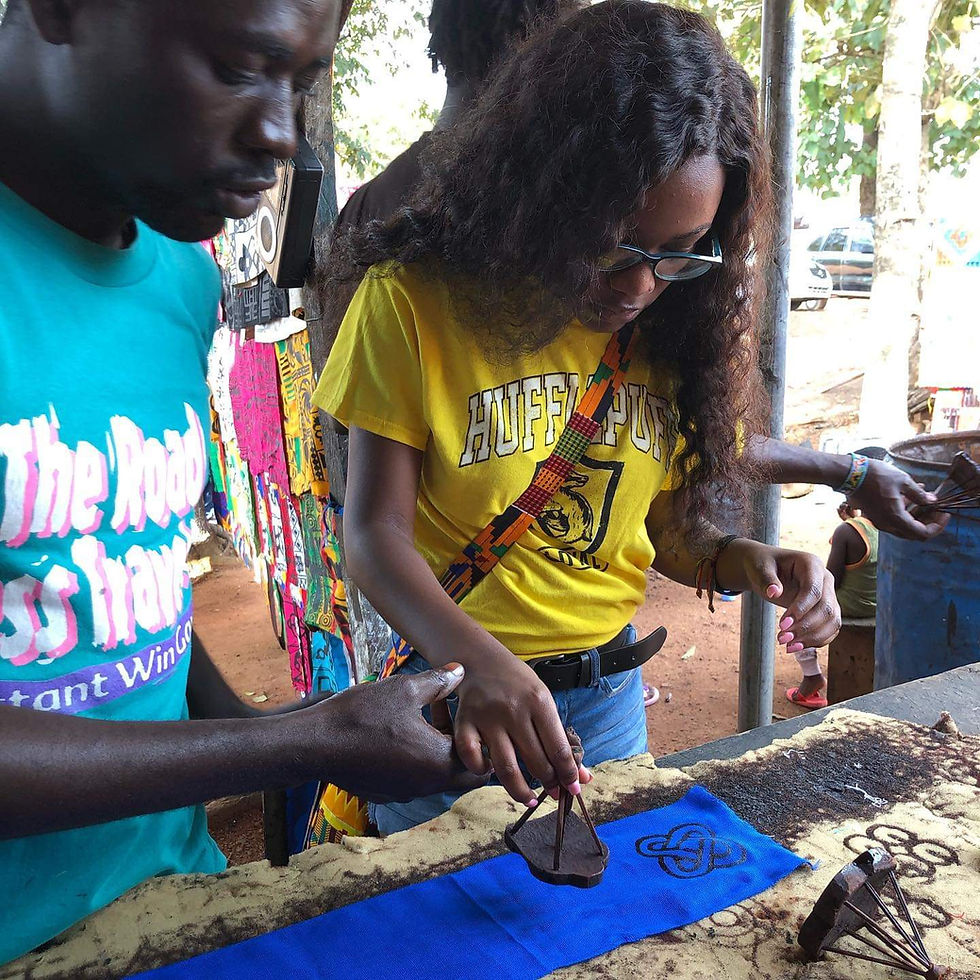Day 2: The Long Trek To Kumasi
- Destination Liberation

- Oct 7, 2019
- 3 min read
It takes about five hours to get to and through the complex streets of Kumasi, Ghana. The city is filled with street vendors, ads that cover each and every building, and an extreme amount of traffic. To begin with, there are people everywhere selling what they can as long as they can to make a living. There are barely any open spaces between each of the business. If you don’t see a table for something you want, you will surely see mostly women and some men carrying whatever it is on their heads. Most times it will be a cold soda, bag of water, or fruit and peanuts. The buildings that you do see in Kumasi don’t compare to those in Accra; they’re smaller yet still covered by business ads from top to bottom. I didn’t see many traffic signs or police during the drive through Kumasi, but I did see vans filled with people and drivers riding close to the cars in front of them while the passengers reach their bodies out of the window to help them with directions. There are very few smooth roads, and the bumps in the road don’t seem to be a barrier or anything that the drivers aren’t used to by now. The driving skills of the people here will forever amaze me along with the strength of those out day and night on the streets making a living for themselves and their families.
Kente weaving is a tradition developed in the early times of Africa. The patterns and colors all serve important meanings in African culture. Although the colors may be what attract most to the cloth, it is not the most important part of it. The patterns are what should be celebrated because of the values derived throughout time. A single thread kente cloth can take more than a day to make. So imagine how long it would take to make a double or triple thread cloth using your hands and feet with no room for mistakes in the patterns. The laborers that make this cloth are truly skilled. Their work gives us a chance to see physical beauty with a purpose.
The Adrinkra symbols I chose for my cloth were kramo bone, odo nnyew fie kwan, and akoma. The kramo bone symbolizes warning against deception and hypocrisy. These actions almost always result in bad experiences and can change a person’s life for the worst. There can only be hope that people would let go of being judgmental and taking advantage of people, but you shouldn’t get your hopes up. Just gain enough strength, knowledge, and blank to not have to depend on anyone except yourself and God. The moments you don’t have these things, you’re giving someone a chance to deceive you or be a hypocrite. The odo nnyew fie kwan represents the power of love and faithfulness.

Love is and forever will be stronger than hate, but this power is not as often recognized because of deceit and betrayal. Despite the negative, love should be chosen rather than revenge and used to unite instead of separate. The akoma is a symbol patience, tolerance, love and faithfulness. These are all qualities you need in your life everyday. For the people and blessings you have met or will meet soon, you’ll need to be patient because you’ll never know when they’re coming. When those things come into your life, they may not be what you expected. Your only choice would be to tolerate and love them while they’re there. These symbols, for me, are reminders of what I’ve learned throughout my life and will continue to need for the many challenges to come.
Ieshia Dumas
17 years old
Wilcox County, Alabama

Comments